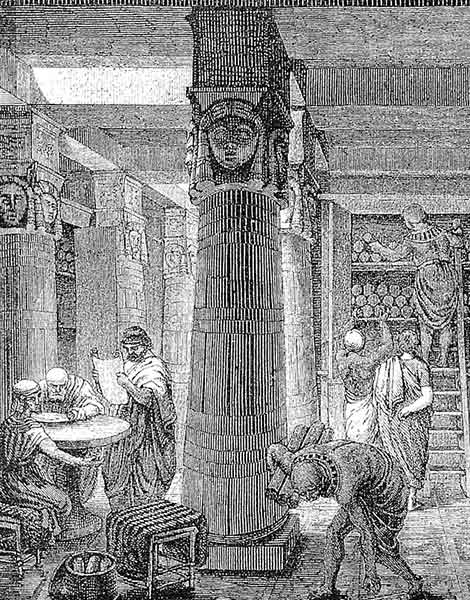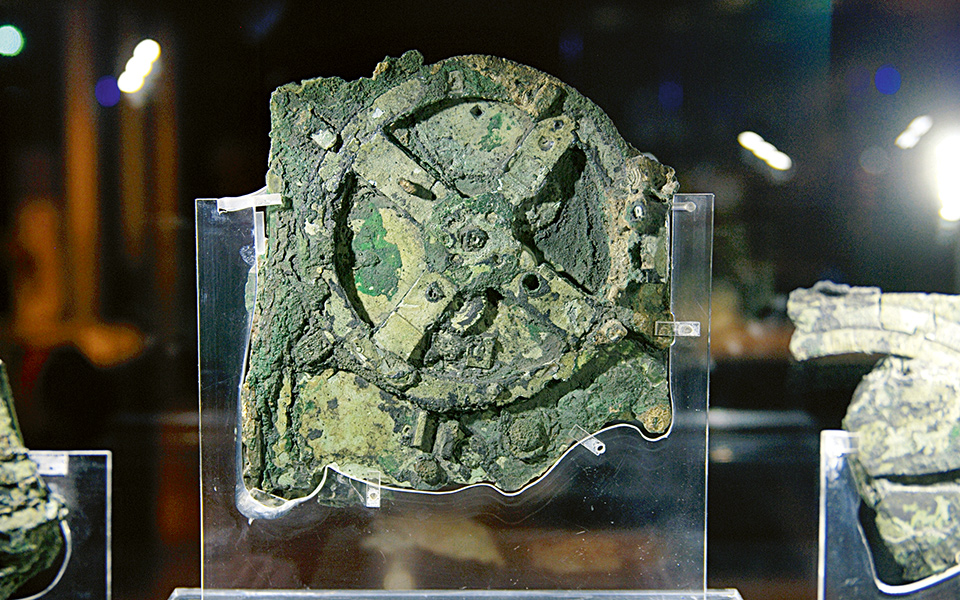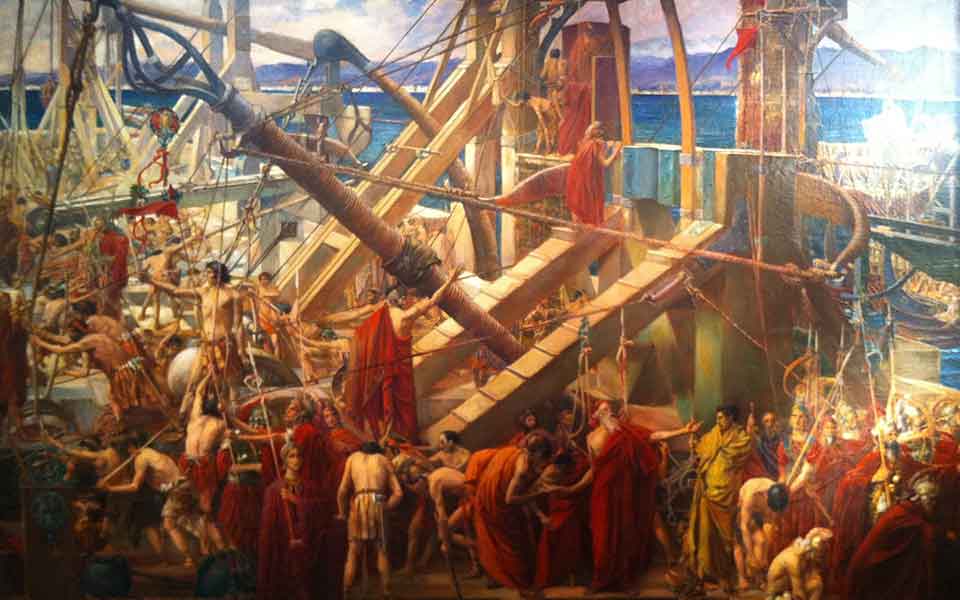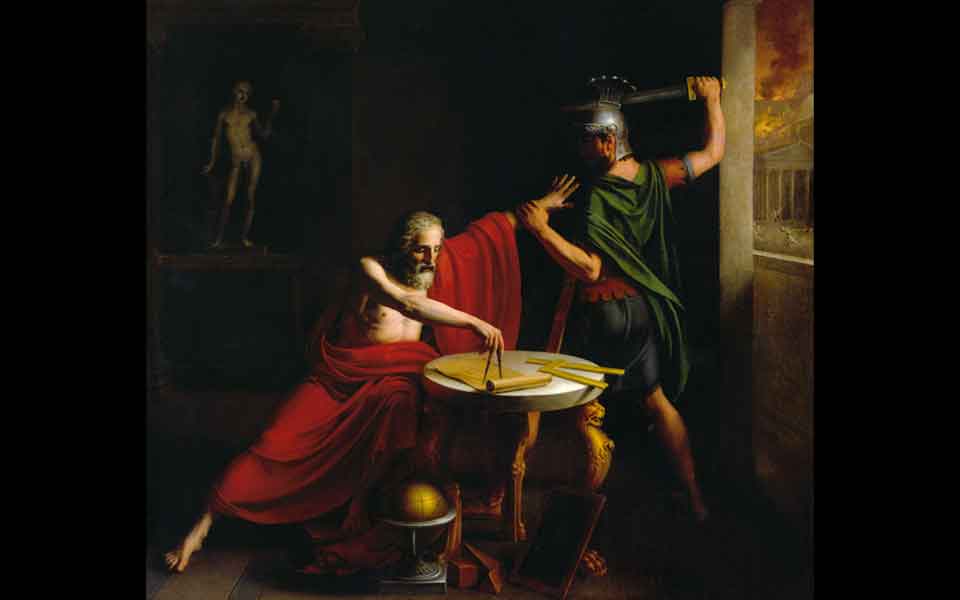If you’ve seen the new Indiana Jones movie, “Indiana Jones and the Dial of Destiny,” you’ll know that ancient Greek mathematician, engineer, and inventor Archimedes features as an important character in the plot. And while you’ve probably come across the infamous story of Archimedes leaping out of his bath and running naked through the streets of Syracuse, yelling “Eureka!” (“I’ve found it!”), what else do you know about the man dubbed the “father of mathematics”?
Born around 287 BC in the coastal city of Syracuse, Sicily, then a self-governing colony of Magna Graecia (“Greater Greece”), Archimedes belonged to an upper class family of scholars. His astronomer father, Phidias, fostered his intellectual curiosity from an early age, and was wealthy enough to send him to Alexandria, Egypt, for a formal education.
Under the patronage of the Ptolemaic Dynasty (323-30 BC), Alexandria was fast emerging as one of the most important intellectual centers in the Hellenistic world, attracting some of the greatest minds in philosophy, history, literature, and science. It was also home to the Great Library, one of the largest and most important libraries in the ancient Mediterranean. It was here that the young Archimedes delved into the works of Euclid, the “father of geometry,” who was active around 300 BC, and became close friends with fellow Greek polymaths Conon of Samos (c. 280-c. 220 BC) and head librarian Eratosthenes of Cyrene (c. 276-195/194 BC), famous for being the first to calculate the circumference of the earth.
Having honed his skills in mathematics, and explored the intricacies of geometry, calculus, and astronomy, Archimedes returned to his native Syracuse, where he spent the remainder of his life in the service of Hiero II (r. 270-215 BC), as the king’s chief engineer and problem-solver.

© Public domain

© Public domain
Polymath
Over the course of his long life, Archimedes made numerous important discoveries across various fields, leaving an enduring legacy that continues to shape modern science and technology.
He is perhaps best known for his pioneering work in mathematics, developing new techniques for calculating areas and volumes, and revolutionizing the field of geometry. One of his most famous contributions was the discovery of the principle of buoyancy, now known as “Archimedes’ Principle.” In the famous anecdote, related by the Roman architect and engineer Vitruvius (c. 90- c. 20 BC), Archimedes is said to have made this discovery while taking a bath. As he immersed his body, he realized that the water level rose, at which point he jumped out of the bath and ran naked through the streets, exclaiming “Eureka! Eureka!” (“I have found it!”). He understood that the upward force acting on an object submerged in a fluid is equal to the weight of the displaced fluid — an essential concept of hydrostatics, which is still used in modern physics and engineering.
Archimedes also conducted groundbreaking work on numerical methods, such as the “Method of Exhaustion,” to approximate the areas of complex shapes. He used this method to calculate the areas and volumes of irregular shapes by dividing them into smaller, more manageable parts. This technique allowed him to measure the surface area of a circle by approximating the value of Pi (π) as 3.14, the ratio of a circle’s circumference to its diameter, with remarkable precision. His work laid the foundation for later mathematicians to develop more accurate calculations, and the value of Pi is still used extensively in mathematics and engineering today.
Archimedes’ brilliance also extended to astronomy and engineering, where he made significant contributions to understanding the properties of levers, pulleys, and the concept of the center of gravity. One of his most ingenious inventions is known as the “Archimedes screw,” a simple device consisting of a helical surface wrapped around a cylinder. When rotated by a crank, the screw lifts water from a lower level to a higher level, a mechanism that is still in use today in irrigation and water transportation. He also formulated the three fundamental principles of levers, which are key to understanding mechanical equilibrium, in his work “On the Equilibrium of Planes.” His discoveries in this area laid the groundwork for modern statics and engineering mechanics.
Despite his extraordinary discoveries and inventions, documentary evidence of much of Archimedes’ original work has been lost. Many of his surviving writings were preserved by later scholars, such as by Isidore of Miletus, in 6th century AD Constantinople, and the Arab mathematician Thābit ibn Qurra (826/836-901 AD), who translated and expanded on his ideas.

Did Archimedes invent the Antikythera mechanism?
While not his primary focus, Archimedes’ work on various astronomical concepts, such as his treatise “On the Sizes and Distances of the Sun and Moon,” showed his interest and understanding of celestial phenomena and early attempts to measure cosmic distances.
Writing in the first century BC, Roman statesman Cicero (106-43 BC) described two astronomical devices that could track the motion of the Sun, Moon, and the five known planets (Mercury, Venus, Mars, Jupiter and Saturn), both attributed to Archimedes.
On this basis of this important reference, some scholars believe Archimedes was the creative genius behind the design of the mysterious Antikythera mechanism, discovered in 1901 in the remains of a Roman-era shipwreck off the coast of the Greek island of Antikythera. The mechanism, which was likely built sometime in the late second/early first century BC, was used to predict astronomical positions and eclipses. Widely regarded as the world’s first analog computer, the Antikythera mechanism is one of the most important discoveries in the history of archaeology.
Nevertheless, Archimedes is only one of a number of contenders as the inventor of the famous device, including Greek mathematician and astronomer Posidonius of Apameia (or “of Rhodes”) (c. 135-c. 51 BC), and Hipparchus of Nicea (c. 190-c. 120 BC). And while Archimedes was a brilliant mathematician, physicist, and engineer, there is no conclusive historical evidence that connects him to the invention of the Antikythera mechanism.

© Public domain
War Machines
Aside from his myriad other intellectual pursuits, Archimedes had a profound impact on engineering and military technology. During the Siege of Syracuse (213-212 BC) in the Second Punic War (218-201 BC), he played a vital role in designing and constructing defensive war machines, including the infamous “Claw of Archimedes” (also known as the “ship shaker”). This colossal grappling hook could lift enemy ships out of the water and capsize them, significantly bolstering the city’s defense against the Roman invasion. Roman historian Titus Livius (59 BC-17 AD), popularly known in English as Livy, remarked that Rome’s forces, under the command of Marcus Claudius Marcellus, suffered heavy losses.
Archimedes also explored the use of “heat rays” and “burning mirrors” during the siege, developing a system of mirrors positioned along the city’s fortifications to focus sunlight onto the sails of incoming enemy ships, setting fire to them. While modern experiments suggest that these claims were exaggerated, the concept of focusing solar energy with mirrors remains a topic of interest in solar power research.

© Public domain
How did he die?
The exact circumstances surrounding Archimedes’ death are not entirely clear, and historical accounts vary. The most well-known account comes from the Greek historian Plutarch (c. 46-119 AD), who lived centuries after Archimedes. According to Plutarch, following the fall of Syracuse to the Romans in 212 BC, General Marcellus ordered that Archimedes be captured alive. It is said that when a Roman soldier found Archimedes engrossed in drawing geometrical figures, he told the soldier, “Do not disturb my circles.” Not recognising who he was, the soldier promptly killed him, much to the dismay of Marcellus.
As for Archimedes’ tomb, there is no definitive historical record of its location, but it was said to be surmounted by a sphere and a cylinder, representing his most profound mathematical discoveries. Cicero claims to have visited the tomb during his time as a magistrate in Sicily. Over time, the location of his grave may have been lost or obscured due to various historical events, including the city’s subsequent conquests and changes in rulership.
Archimedes’ contributions to mathematics, physics, and engineering made him one of the most influential figures in ancient Greek history. His works had a lasting impact on future mathematicians and scientists, including great minds like Galileo, Isaac Newton, and Johannes Kepler, who built upon his principles and expanded scientific knowledge.












